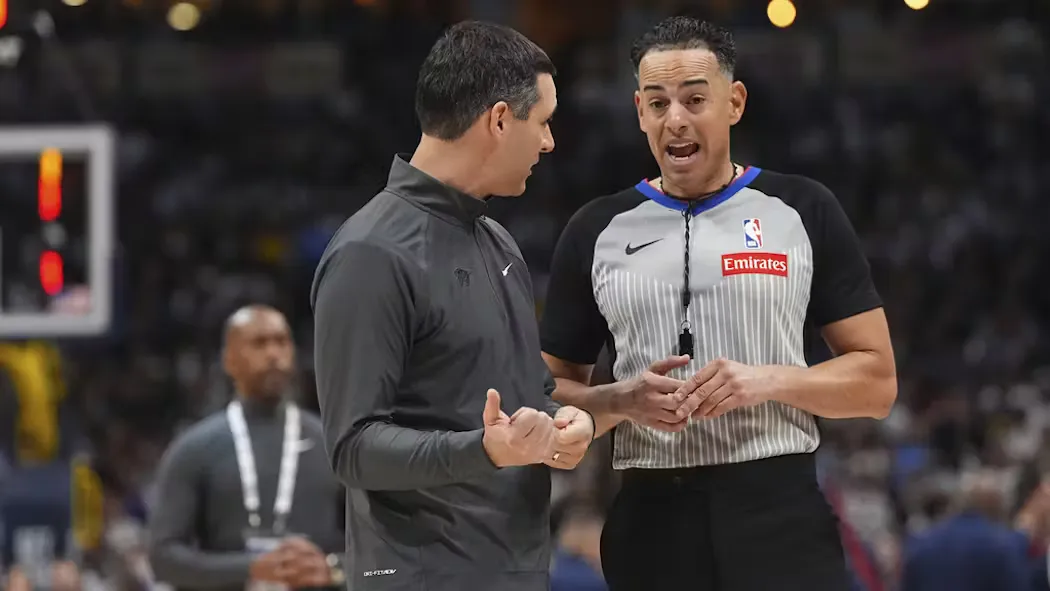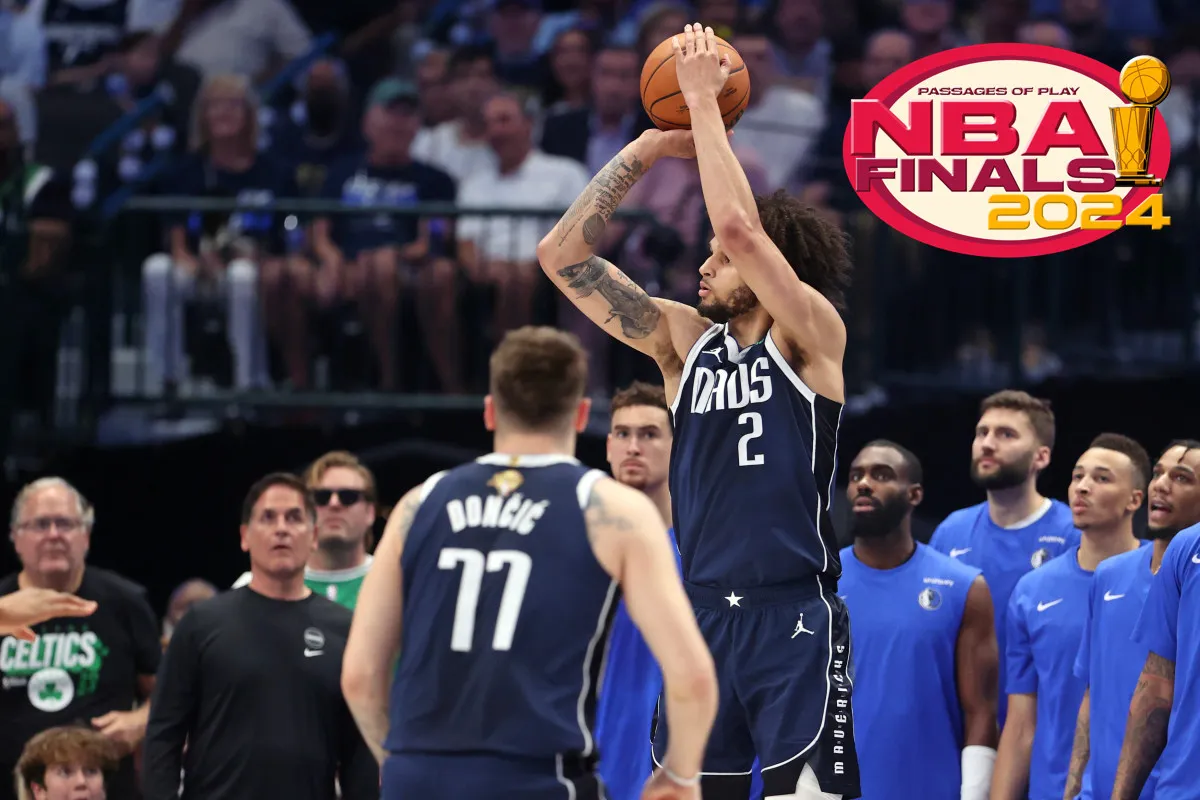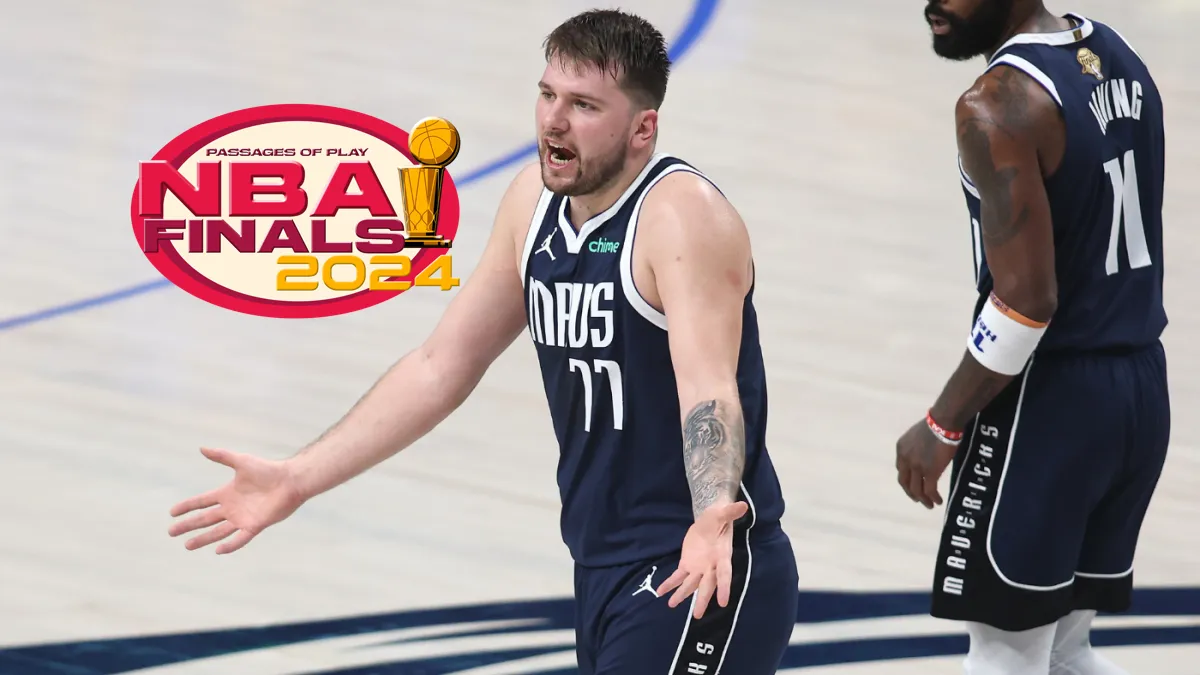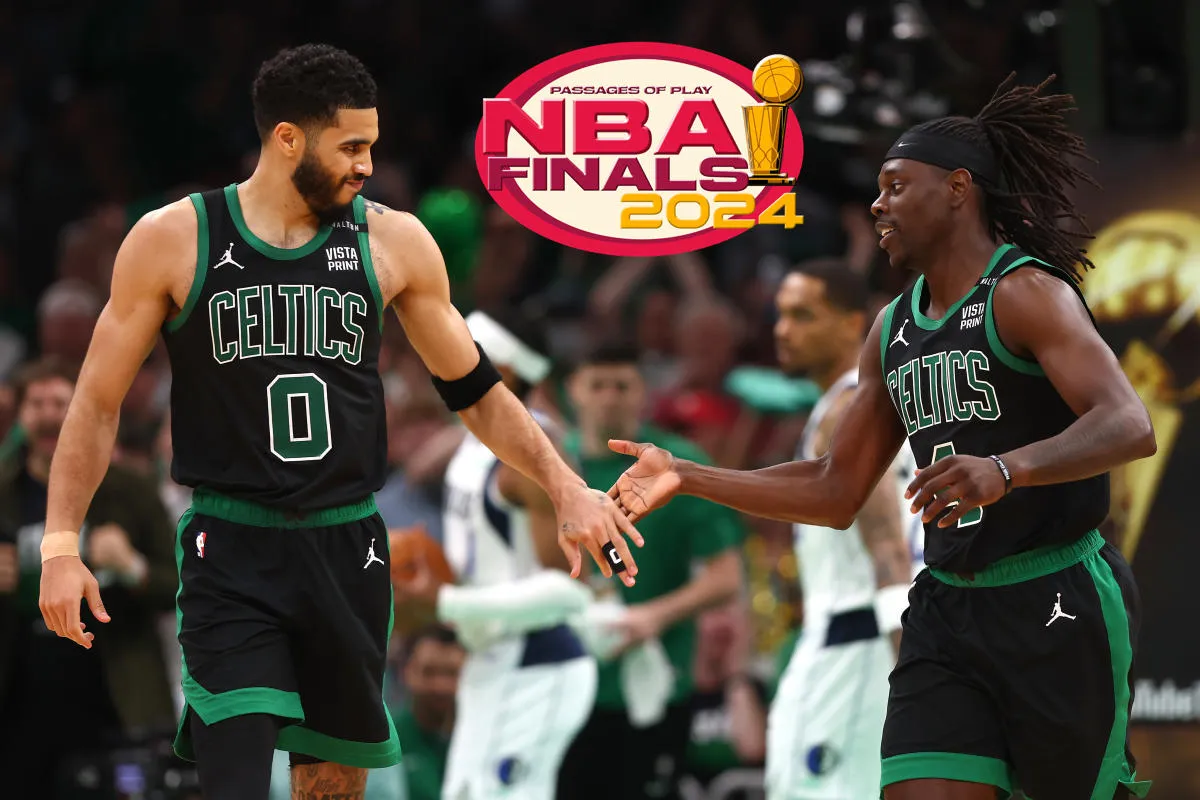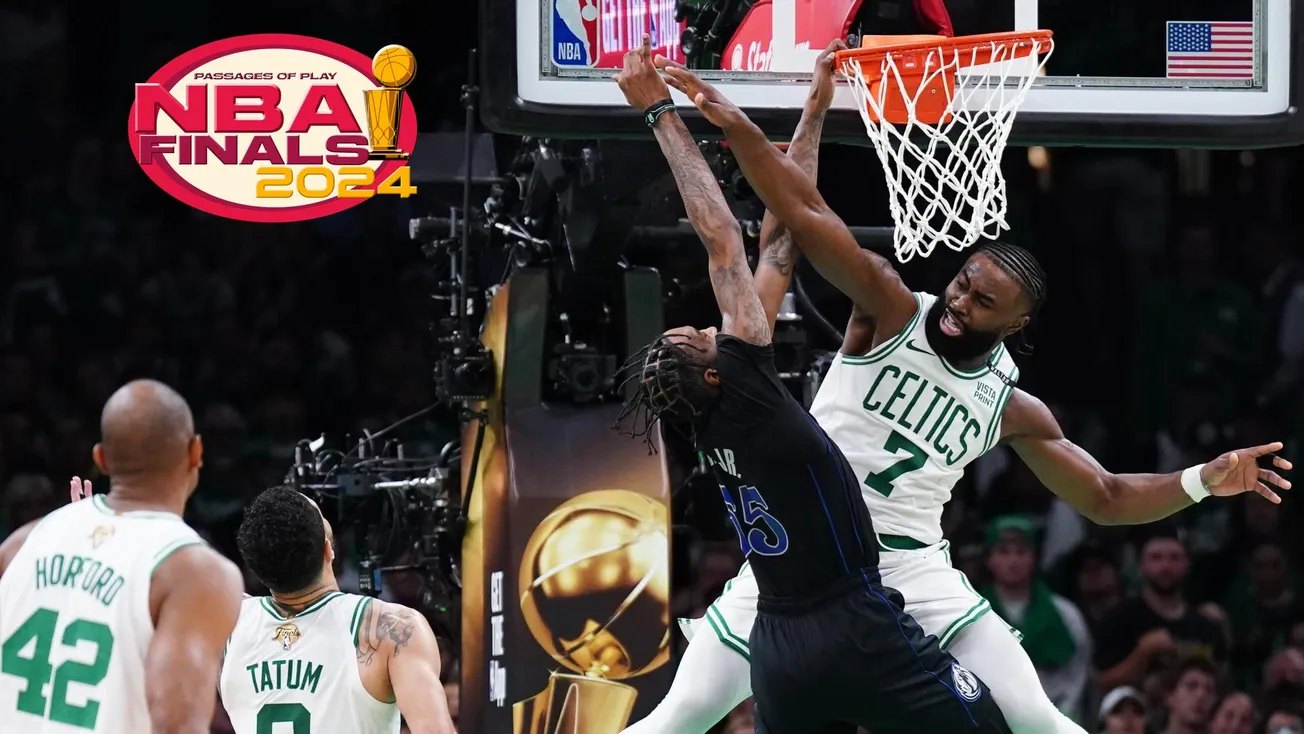Table of Contents
If at first you don't succeed, try, try again.
The Oklahoma City Thunder took that advice a little too literally in overtime of Game 3 against the Denver Nuggets. After missing numerous opportunities to put the game away and having just blown the lead in the final minute of regulation, the Thunder played one of the worst five minute stretches of basketball in postseason history. And it wasn't all that surprising.
Why wasn't it surprising that the league's second-best halfcourt offense during the regular season could only muster two points in five minutes against the league's 17th-ranked halfcourt defense? Well, because they kept doing this.
Just about the only thing that differentiates those three possessions is that Denver's lead keeps appearing larger and larger, making each and every Isaiah Hartenstein floater even less sensible.
Even after watching MVP favorite Shai Gilgeous-Alexander brick his way through crunch time on similarly stagnant, cramped possessions, it was dumbfounding to see him continually defer to the team's worst offensive option in OT. As bad as some of SGA's forced stepback 3s looked down the stretch, surely a few more of them would be preferable to having your brute center hopelessly launch floaters from odd angles, particularly as the gap widened.
Thunder coach Mark Daigneault didn't seem to mind the shot selection.
"At that point in the game it becomes more of a possession game, so it just naturally slows down, and you've got to execute," Daigneault said. "We did some good things on some possessions."
At the risk of my own sanity, I re-watched the final nine minutes worth of Oklahoma City offense. I could not identify any good things done by OKC down the stretch, process or results wise. There were multiple poor attempts from SGA, somehow just one shot in overtime for Jalen Williams, who had it rolling near the end of the fourth, and, for some reason, three depressing Hartenstein flip shots.
Hartenstein's first floater was the only defensible one. OKC was only down two and still felt attached. But that feeling would dissipate quickly as Michael Porter Jr. drilled a three on the ensuing possession, pushing Denver's lead to an insurmountable five. With the momentum carrying over from Aaron Gordon's game-tying shot in the final minute of regulation, an already tight Thunder squad collapsed in on itself.
But it's important to point out how Denver built that quick five-point lead in overtime, aside from reminding you once again that Oklahoma City's first shot attempt of the period was an airmailed catapult from its least capable offensive player. Daigneault decided to alter his starting/closing lineup to begin the extra period, subbing out Chet Holmgren in favor of Alex Caruso. This decision immediately backfired and all but ended the game.
As the Minnesota Timberwolves showed in their second round showdown with Denver last season, the best (and possibly only) way to out-execute this Denver team down the stretch is to play two bigs. If you don't have size to guard Jokic at the high post and on the backline to deal with Denver's cornucopia of cuts and drives, then your defense is going to be compromised. Like so.
Jokic rejects the screen and drives by Hartenstein with ease. With Holmgren on the bench, SGA is the low man, and he is unable to provide any resistance on Jokic's drive.
On the next trip down, it is Jamal Murray who rejects the screen this time. Murray gets by Dort, forcing help from Caruso, who leaves Gordon on the baseline. Because Caruso is a small guard, he isn't able to simultaneously help on Murray's drive and prevent the lob the way Holmgren might, necessitating a dig down from SGA. This leaves MPJ wide open from the wing for 3.
Two defensive possessions, two easy scores for Denver where not having a second big on the floor put the Thunder in an extremely compromised position.
Unfortunately for Daigneault, these kind of breakdowns aren't hard to see coming. This is how Denver's crunch time offense has operated for three seasons now. The reason OKC matches up well with the Nuggets is its ability to mimic what Minnesota did with Rudy Gobert, Karl-Anthony Towns and Naz Reid last season with Holmgren, Hartenstein and Jaylin Williams. It's one thing if foul trouble negates this advantage, but Daigneault handcuffed the team himself with his lineup decision.
There is no case to be made for benching Holmgren to start overtime. The Denver dilemma, while difficult to overcome, is actually quite simple in its presentation and solution. You must have size on Jokic when he has the ball on the perimeter, and that big will likely have to crowd Jokic to prevent him from shooting comfortably from the outside. Because your primary defender on him will play his jumpshot tightly, Jokic will counter by trying to bully his way to the basket. If he succeeds in gaining an advantage going to the rim, you must have another center there to prevent an easy finish like the one he started overtime with over SGA. This second big must also be physical and athletic enough to contend with Gordon, who is the game's preeminent dunker spot threat.
In crunch time moments, Denver will return to a small but reliable set of actions that get Murray or Jokic involved in screens and handoffs at the elbows and the top of the key. This will put enormous stress on the guards chasing Murray and Porter Jr. around, but ultimately the most important defenders are the bigs who keep the entire defense from having to bend to protect the paint. Take one of those bigs off the floor, and all Denver has to do is pull your lone center away by having Jokic initiate at the top of the arc, and now the paint is free to attack.
After Porter Jr.'s 3, Daigneault sent Holmgren to the scorer's table. But with OKC's offense sputtering, it was already too late. And that's the other thing about benching Holmgren to start overtime: It didn't make any sense on the other end either.
Holmgren had some nice moments offensively in Game 3 but he has also looked athletically overmatched in the paint at times and hasn't shot the ball well from deep. Nonetheless, replacing him with Caruso meant that the three players surrounding SGA and Jalen Williams were Caruso, Lu Dort and Hartenstein. After seeing how heavily Denver zoned up to close out the fourth quarter of this game, it's unfathomable that Daigneault believed this offensive group would offer enough spacing to give his stars room to operate.
To put it bluntly: Denver does not care if Caruso, Dort or Hartenstein shoot the ball. In fact, they want them to. The Nuggets are confident they can generate a high-quality look for Murray, Jokic, Porter Jr. or Gordon down the stretch and they have all proven capable of making clutch shots in a variety of ways. Caruso, Dort and Hartenstein are all one-dimensional scorers, and that dimension comes and goes. Any possession that ends in their hands instead of SGA or Jalen Williams is a massive win for the Nuggets.
This is how Denver has to play defensively because Jokic is so vulnerable on that end. But the Thunder, just like the Clippers, are playing right into the Nuggets' hands. In the first round, Ty Lue couldn't stop himself from playing Derrick Jones Jr. and Kris Dunn. Do those players offer some valuable defensive qualities? Sure. But in a playoff series against Denver, they also offer Jokic a player to "guard," or completely ignore in order to clog up the paint for the opposing stars.
SGA and Jalen Williams are now seeing the same pictures that Kawhi Leonard and James Harden saw in Round 1. The paint is packed, the wings are pinched in and fifth options are being lured into taking bad shots. If Kris Dunn and Lu Dort are going to beat the Nuggets...well, they aren't. And that's why Denver keeps winning games.
Dort, who was 0-for-4 from deep in Game 3, highlights just how wide of a gap exists in the realm of shooting threats. Dort shot a career-best 41.2 percent from three this season, which means he shot better than Porter Jr. did this campaign. But the difference in shooting talent between those two players is astronomical. As he showed in Game 3, Porter Jr. is able make heavily contested shots from all angles, while moving or stationary, and will let if fly with the game on the line without hesitation.
Dort, meanwhile, is only a viable shooter under ideal circumstances. And for him and almost all of OKC's perimeter players (Caruso, Cason Wallace, Aaron Wiggins, etc), that means they can only reliably make shots if they are left wide open. And truly wide open shots are much harder to come by in the postseason, which is why Dort is a career 31 percent shooter from deep in the playoffs (he's at 26.7 percent this postseason), a full five percentage points below his career regular season marksmanship.
A lot has been made about OKC having more depth than the Nuggets, but I don't see it as much of an advantage, not when the Thunder's bench unit features a few guys who all play the same exact role. One of the benefits of only playing seven players is that Denver's shots are distributed in a familiar manner each game. The Thunder don't know whether Dort or Caruso or Holmgren or Wallace will wind up taking a high number of shots on a given night, and they also aren't dictating that distribution - Denver is.
Ironically, despite Sam Presti recently being named Executive of the Year and Calvin Booth recently being fired, I think the latter did a better job building a championship roster for this season. This Nuggets team is better than the one that won the title in 2023. Christian Braun has developed into a more impactful player than Kentavious Caldwell-Pope, Russell Westbrook offers everything Bruce Brown did with a higher ceiling and a lower floor and Peyton Watson is having more of an impact than Jeff Green did. And, of course, Murray, Gordon and Porter Jr. still fit like a glove around Jokic and they all manage to be active threats on every possession.
On that note, here are those Hartenstein floaters again. This time, instead of being distracted by his woeful attempts, follow Caruso and Dort around to see just how much respect Denver has for them offensively.
Despite being down 2-1 and facing another tough road game on Sunday, Oklahoma City still has a chance in this series. But I'd bet against the Thunder figuring it out, not against a Nuggets team whose best five-man unit is so in tune that it doesn't even matter that the franchise fired its coach a week before the playoff started.
During crunch time in this series, we have seen that OKC's young core has a lot of room to grow, and these warts will likely be forgotten one day when they realize making mistakes and learning from them is a big part of being comfortable in a postseason environment. But it doesn't help when your head coach is just as green as your star players, and the Thunder lack a tactician who is up to the task in high-pressure games when schematics matter as much as shotmaking.
The foul debacle at the end of Game 1 will always haunt Daigneault primarily, because that decision originates with him. A systemic collapse like what the Thunder offense endured at the end of Game 3 will be worn more by SGA, because that's the burden MVP candidates carry.
But I think Oklahoma City's meltdown in Game 3 was Daigneault's biggest failure in this series so far. Ultimately, Holmgren's missed free throws led to a bad result, but didn't indicate a broken process. What happened in the final nine minutes of Game 3, though, was not only a more prolonged implosion, with the same mistakes constantly repeated, but it was also a collapse that seemed inevitable as it unfolded.
Gordon's shot in Game 1 was a miracle. His shot in Game 3 was a matter of time.

